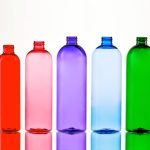Part 3. Waste disposal
Waste disposal is the last option in the waste treatment hierarchy. Therefore before using this option, waste destruction is recommended. Some destructive options are the following: Pyrolysis (heating without O2) of plastic waste produces a hydrocarbon fraction usable as transportation fuel. However, the crude oil produced requires hydroprocessing , fractionation and the removal of O and N. Municipal solid waste or its sorting rejects fractions may also be directly pyrolized. Heating the plastic waste with air or steam (Gasification) produces synthesis gas that needs further conditioning and conversion; therefore it is an expensive method. Hydrotreating via hydropyrolysis and hydroconversion produces aromatic rich distillate. Coprocessing microalgae biomass and plastic material by hydrothermal liquefaction produces aromatic liquid crude and solid residue. Synergy between the algae and plastic addition hydrothermal treatment is reported1 for PC (polycarbonate) and PS (polystyrene) in the liquid crude and solid. PET (polyethylene terephtalate) also shows moderate improved in the liquid crude produced. Biodegradation is advice for many wastes; however, it is limited by the biodegradability of the plastic waste and the lost of any degrade fraction that may be useful as combustible. Anaerobic biodegradation, however, can be arranged to recover methane as combustible gas. Photodegradation may also be used, however, its implementation requires formulation of the original plastics in order to ensure efficient degradation. This topic will be cover in Part 4.
Waste disposal
Final disposal in a confined place (landfield) isolates the plastic waste from its direct contact with the environment. However, the volume of these spaces is quite limited in relation to the volume of plastic waste produced. Other concerns are the release of leachable to the groundwater level causing aquifers contamination with plastic degradation products as bisphenols from PVC, and phthalates. Therefore, control of emissions and leachate contaminants should be installed at the landfield to ensure complete isolation of the plastic waste. Although, landfield dominates2 (54 %) in the management of solid waste in upper-middle income countries, in high-income countries it is reduced to 39 % where recycling increases (29 %). Open-dump, dominates (93%) in low-income countries. Reused of disposed plastics is an alternative that has taken off. For instance, modular plastic roads using CCL (Circular, Climate-adaptive, Lightweight) technology is being implemented in different countries. Also plastic bottles are being used3 as construction materials like plastic bricks.
1.- B.Guo, B.Yang,Y. Su, S. Zhang, U. Hornung, N. Dahmen, ACS EST Engg., 2 (2022) 65−77
2.- D . Hoornweg, P . Bhada-Tata. What-a-Waste-2012-Final-updated.pdf© 2018 International Bank for Reconstruction and Development / The World Bank1818 H Street NW, Washington DC 20433
3.- Md, S. Haque, S.Islam, Cleaner Engineering and Technology, 3 (2021) 100110





